8 plants for pollinators – to welcome butterflies and bees into your garden
These expert-approved plants for pollinators are great for wildlife, and look beautiful, too
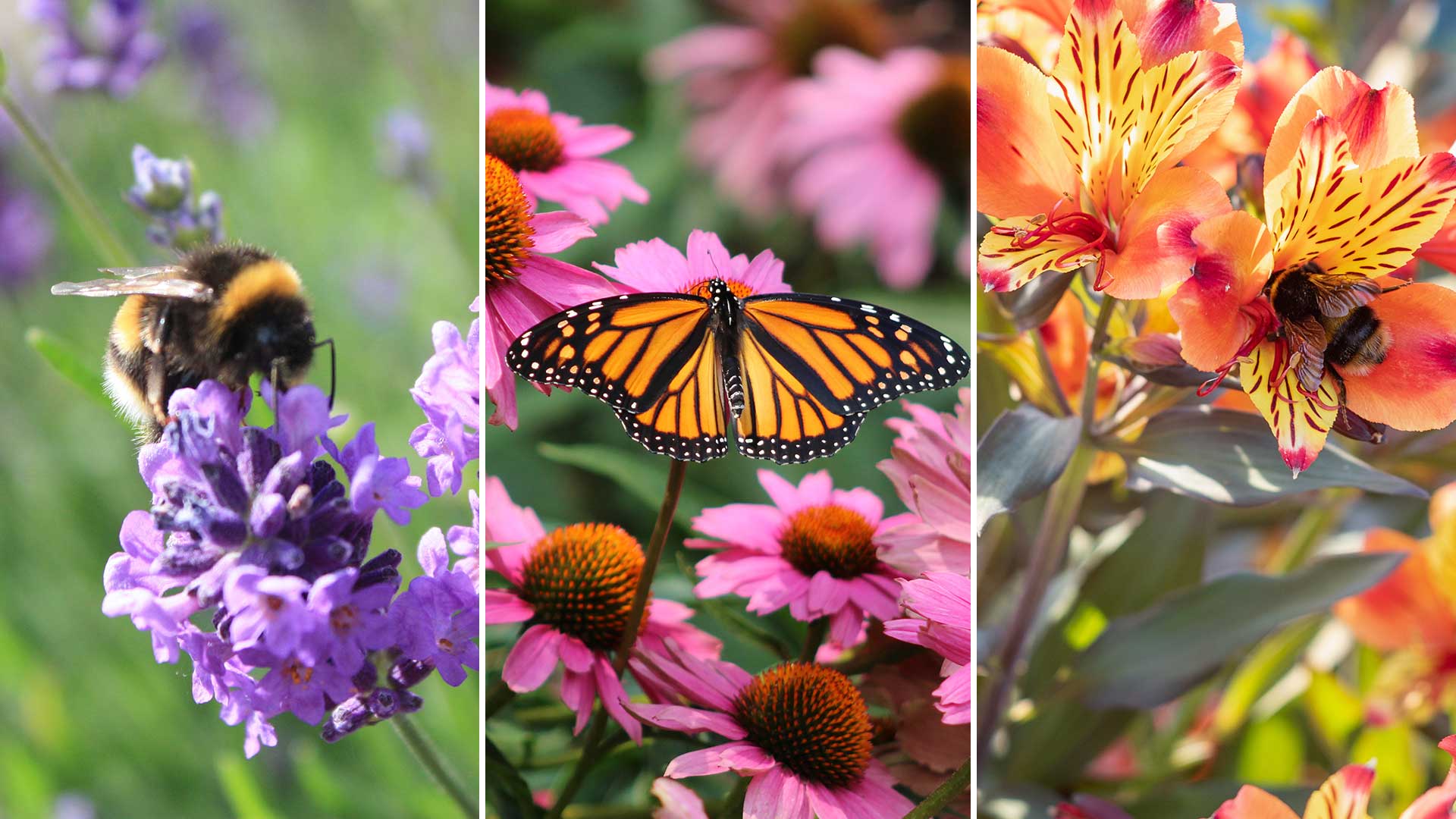

Growing plants for pollinators is a great way to support your local bees and butterflies. Plus, their aesthetic appeal is not to be overlooked – whether grown in pots or borders, these beauties add vibrant colour to your planting scheme.
Nectar-rich flowers can complement all sorts of garden trends. So, whether you prefer a neat and contemporary look or love the laid-back approach of rewilding, it's easy to incorporate them into your space. What's more, many are super low-maintenance, making them perfect for beginner gardeners.
To help you pick the best options for your garden, we chatted with the experts for advice. They share their top choices below, as well as practical tips on how to care for them.
8 pretty plants for pollinators – for growing in pots and borders
Plant these expert picks to bring more colour and life to your space – there's something to suit all types of gardens and styles.
1. Echinacea

Echinaceas flower from summer into autumn
Nigel Lawton, Dobbies’ plant buyer, recommends echinaceas as some of the best plants for pollinators. They have nectar-rich pollen and come in a variety of colours, including pink, red, orange and white, he says. "The large flower heads make a wonderful landing pad for many insects like butterflies, moths and bees.
"These bright blooms are perennial plants, flowering year on year, and couldn’t be easier to care for," he continues. "Echinacea plants thrive in a sunny location in the garden, and are ideal for both beds and containers."
Gardening expert Sarah Raven recommends the "Magnus Superior" variety, available from the Sarah Raven shop. It has giant, deep purple flowers, with an appearance similar to daisies, from the start of summer until autumn, she says. "Butterflies absolutely love them."
Sign up for the woman&home newsletter
Sign up to our free daily email for the latest royal and entertainment news, interesting opinion, expert advice on styling and beauty trends, and no-nonsense guides to the health and wellness questions you want answered.
She notes that echinaceas do not like to be crowded, so should be given space. "Avoid planting in spots that are wet in winter," she adds. "You should cut back the stems as the blooms fade for the best chance of further flowering."

Nigel Lawton is a passionate gardener. His interest sparked as he left high school, going on to spend three years in horticultural college. He has worked in garden centres for over 25 years and has spent over six of those years with Dobbies. Nigel is very knowledgeable about a variety of plants and spends his time as Dobbies’ plant buyer focusing on shrubs, perennials, trees and soft fruits.
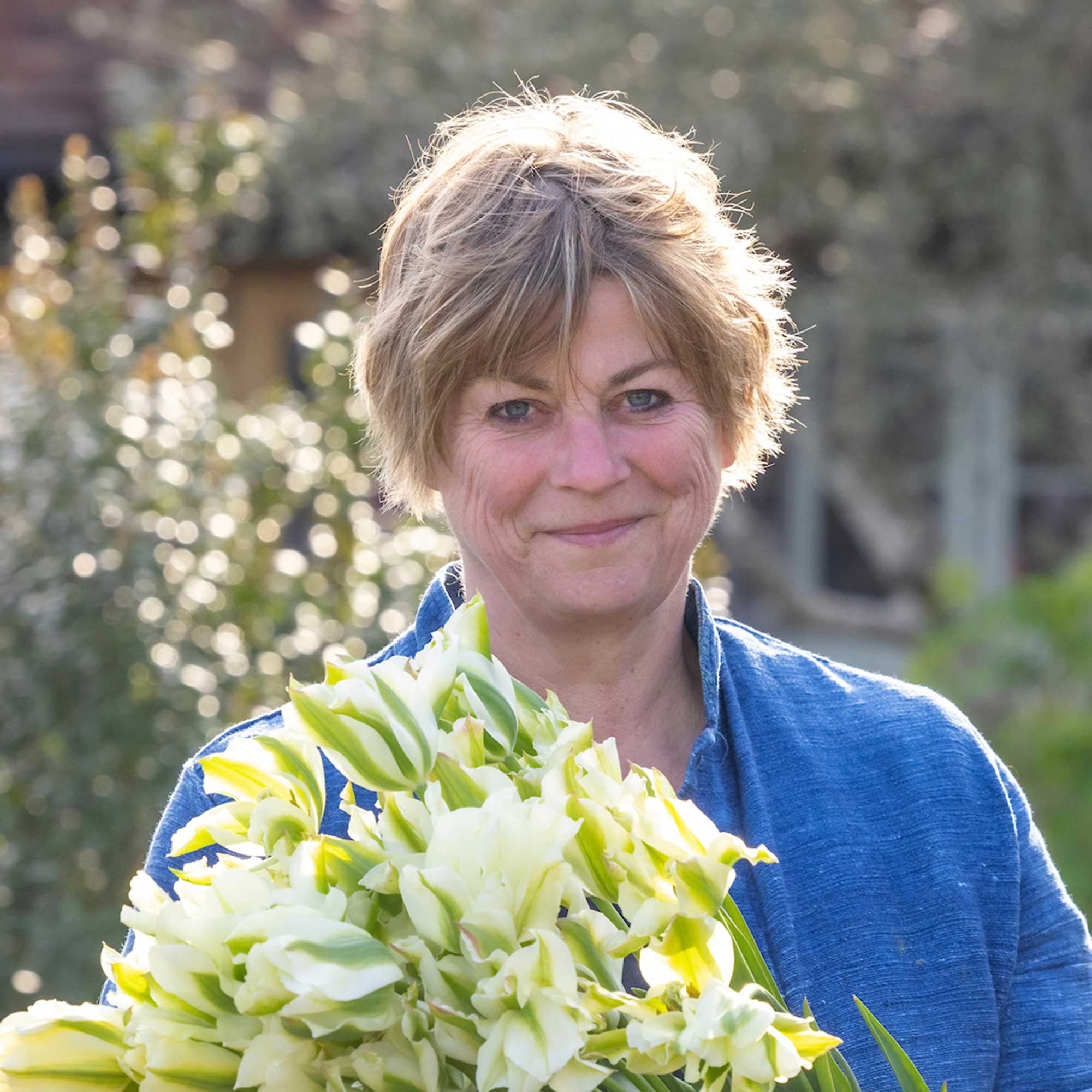
Since the publication of her first book, The Cutting Garden, Sarah has led the way in introducing a new kind of productive gardening. Her aim is to create intense colour and beauty, combined with a practical and easy-to-achieve approach. Her popular gardening podcast Grow, Cook, Eat, Arrange has achieved 4.1 million downloads. She’s published 15 books and runs Sarahraven.com, which services over 600,000 customers.
2. Cornflowers

Cornflowers are easy-grow annuals
Dr Emily Lambert of Seedball suggests cornflowers for a wildlife-friendly garden. "Cornflowers are an annual plant, that come in an array of gorgeous hues," she says. "Their rich scent and colour attract a variety of insects, bees and butterflies, as well as night-flying bugs like moths and lacewings."
These flowers are a particularly good pick if you're looking to recreate the wildflower garden trend. They can be sown directly outdoors in the spring, and thrive in sunny, well-drained soil. Deadheading will encourage more blooms.
Try sowing "Blue Diadem" cornflower seeds from Suttons – a deep-blue variety that makes pretty cut flowers.

Dr Emily Lambert is a conservation scientist, and alongside Dr Ana Atlee, founded Seedball, a multiple-award-winning, not-for-profit organisation. Seedball’s mission is to help increase the abundance of British wildflowers and wildlife that depend upon them by encouraging people to maximise the outdoor space available to them and scattering seed balls of native flowers.
3. Lavender
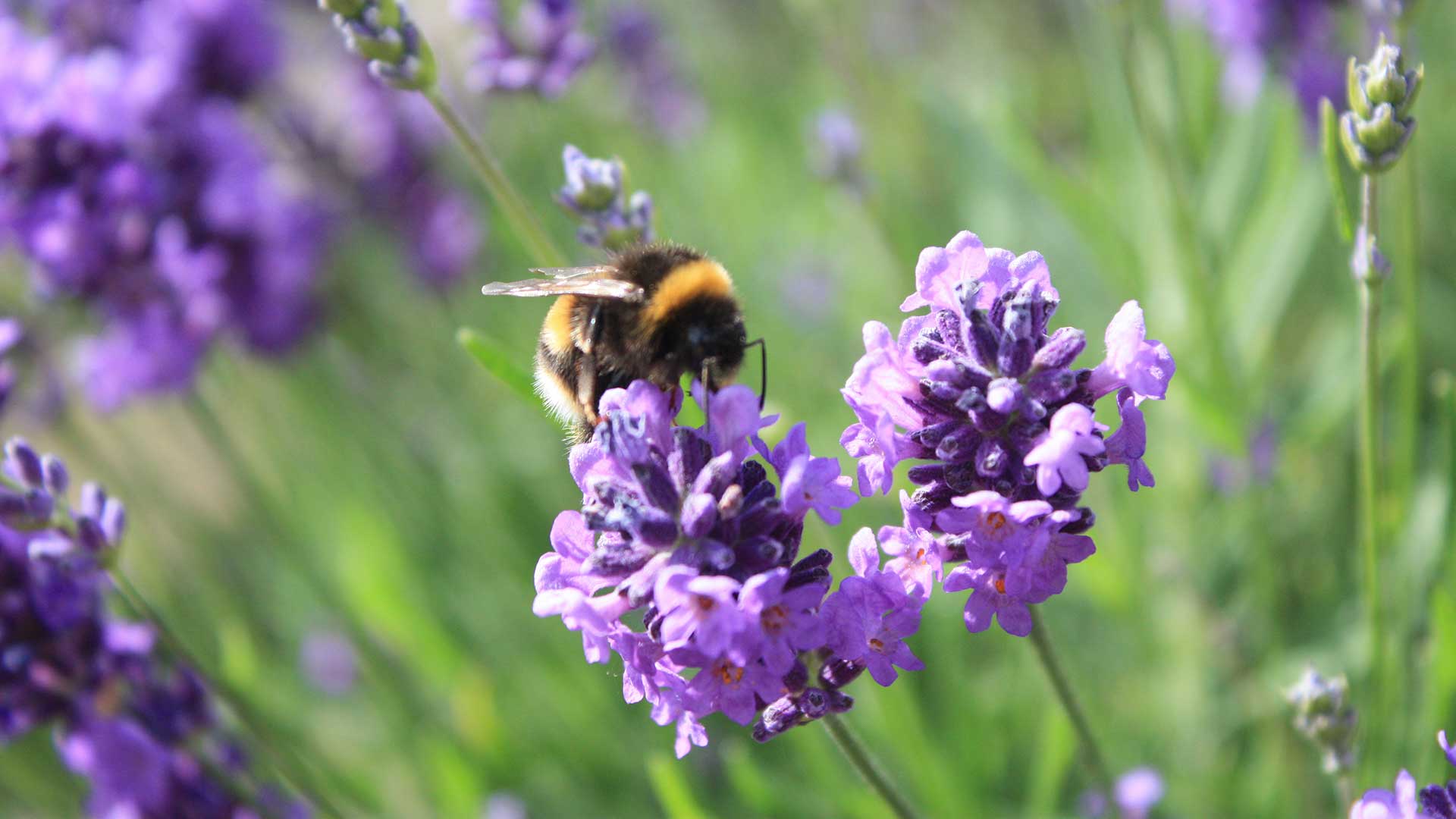
Lavender looks fabulous in pots or planted alongside paths
Nigel says, "Lavender is a very popular option when encouraging pollinators, adding a beautiful hue of lilac to the garden design and a sumptuous fragrance." It blooms for several weeks, he adds, providing a long-term food source from spring right through summer. He recommends growing this drought-tolerant plant in a sunny spot with well-drained soil.
Sarah advises cutting back the flower spikes in the autumn – "but do not cut into the woody stem. Make sure you do not overwater, as lavender dislikes having soggy roots," she adds.
In terms of which variety to choose, Sarah recommends Lavandula angustifolia "Hidcote", available from the Sarah Raven shop. It is the most floriferous of the compact lavenders, she says, and is incredibly reliable.
Try growing these alluring plants as part of a Mediterranean-inspired scheme.
4. Wild marjoram
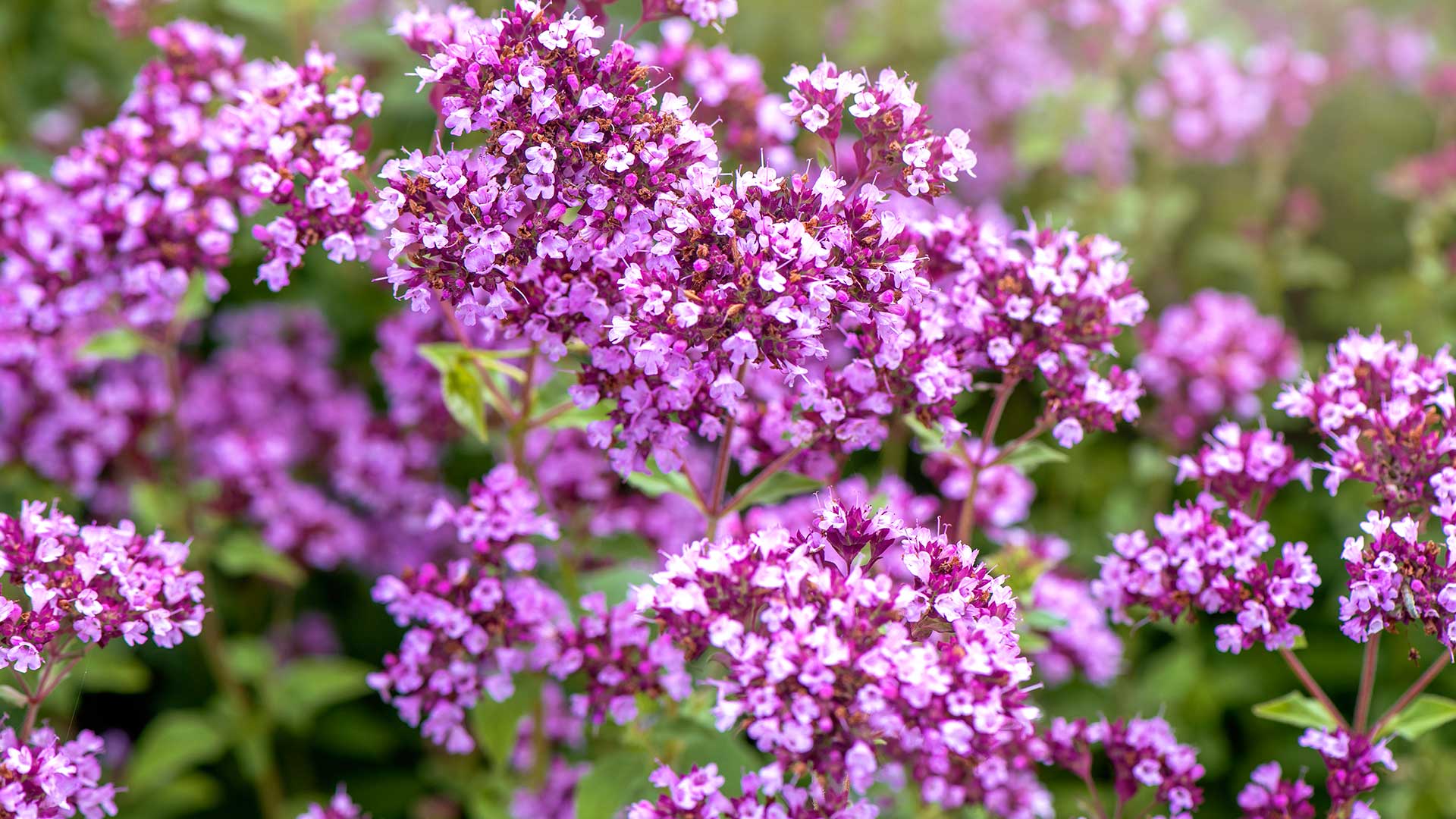
This aromatic herb provides plenty of blooms
Emily recommends wild marjoram, an aromatic perennial herb with clusters of rounded pink flowers, as one of the best plants for pollinators.
Sarah agrees: "It’s a native plant species and one of the richest sources of pollen and nectar for bees and butterflies. It’s long-flowering, drought-resistant, grows well in pots, and with its aromatic edible leaves, marjoram can be used in cooking as well.
"In early spring, before the plant starts to grow again, cut back the old flowering stems," she advises.
Try growing this beauty in a container on your patio or as part of a sunny herb garden border. Either way, it's a good addition to the quiet luxury garden trend.
You can buy wild marjoram from the Sarah Raven shop.
5. Rudbeckia
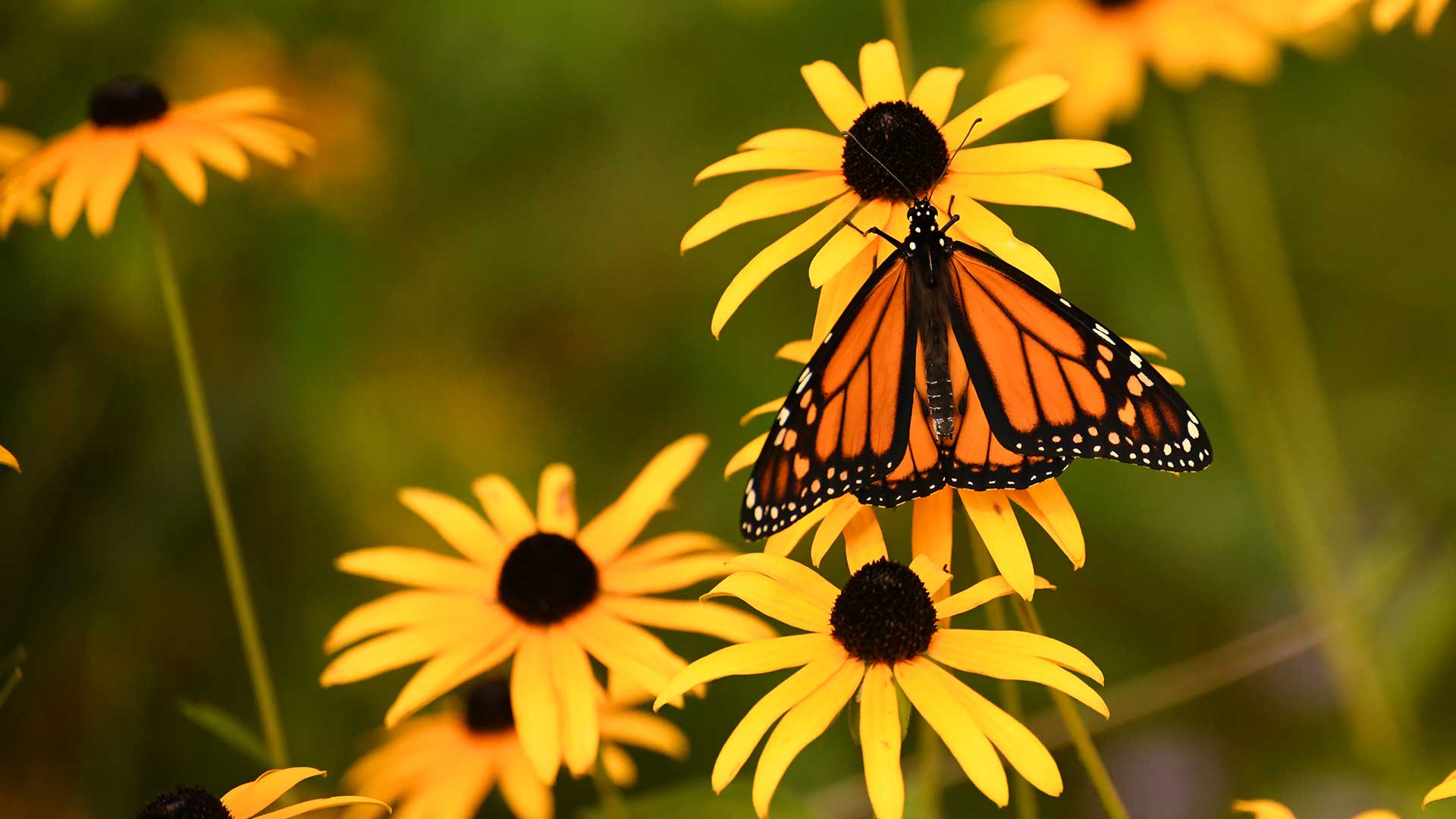
An uplifting choice for a wildlife garden
Eric Michels of CJ Wildlife suggests these cheery perennial plants for attracting pollinators to your garden.
They will grow in almost any soil conditions, reaching heights of around 60cm, he says. The bright yellow petals attract pollinators to the pollen-rich centres, and provide sturdy platforms for butterflies to land on, he adds.
"Throughout August and September, these majestic plants add a burst of colour to any garden, supplying sustenance for wildlife towards the end of the growing season."
A range of rudbeckias is available at Crocus.

Eric is a passionate wildlife enthusiast who is leading the way in educating the people of Britain and beyond on the importance of caring for wildlife and protecting biodiversity. Eric’s expertise spans from birds and mammals to bees, butterflies and insects, allowing him to provide invaluable advice to a range of organisations.
6. Buddleia

Try growing a potted buddleia to attract butterflies
Eric recommends buddleia, too, which is also known as the butterfly bush. It's a beautiful fragrant plant and a favourite nectar source with butterflies, hence its more commonly known name, he says.
The flowers come in a variety of vibrant colours including purple, pink and white, he says. However, to avoid it swamping your garden, he recommends regularly pruning buddleia and growing it in pots.
Sarah suggests the "Hot Raspberry" variety, available from the Sarah Raven shop. It has striking, hot pink flowers for up to four months at a stretch, she says. "This dwarf variety grows easily and is ideal as a patio specimen or as a feature plant in a small garden."
7. Alstroemeria

These flowers bring fiery hues to a planting scheme
"Alstroemeria, or Peruvian lilies, produce clusters of vibrant flowers in shades of red, pink, purple, yellow and orange, often decorated with blotches, speckles and stripes," Nigel says. "Blooming throughout summer and early autumn, this is a great choice for the garden and is guaranteed to attract an array of pollinators with its high pollen count."
These perennials enjoy a warm, sheltered spot in the garden, he continues – a south-facing position in well-drained soil, next to a wall, will help them thrive.
To protect the plants from frost in the winter, add a layer of mulch to alstroemeria in borders, or move potted plants somewhere sheltered.
There's a colourful range of alstroemerias available to buy from Crocus.
8. Forget-me-nots
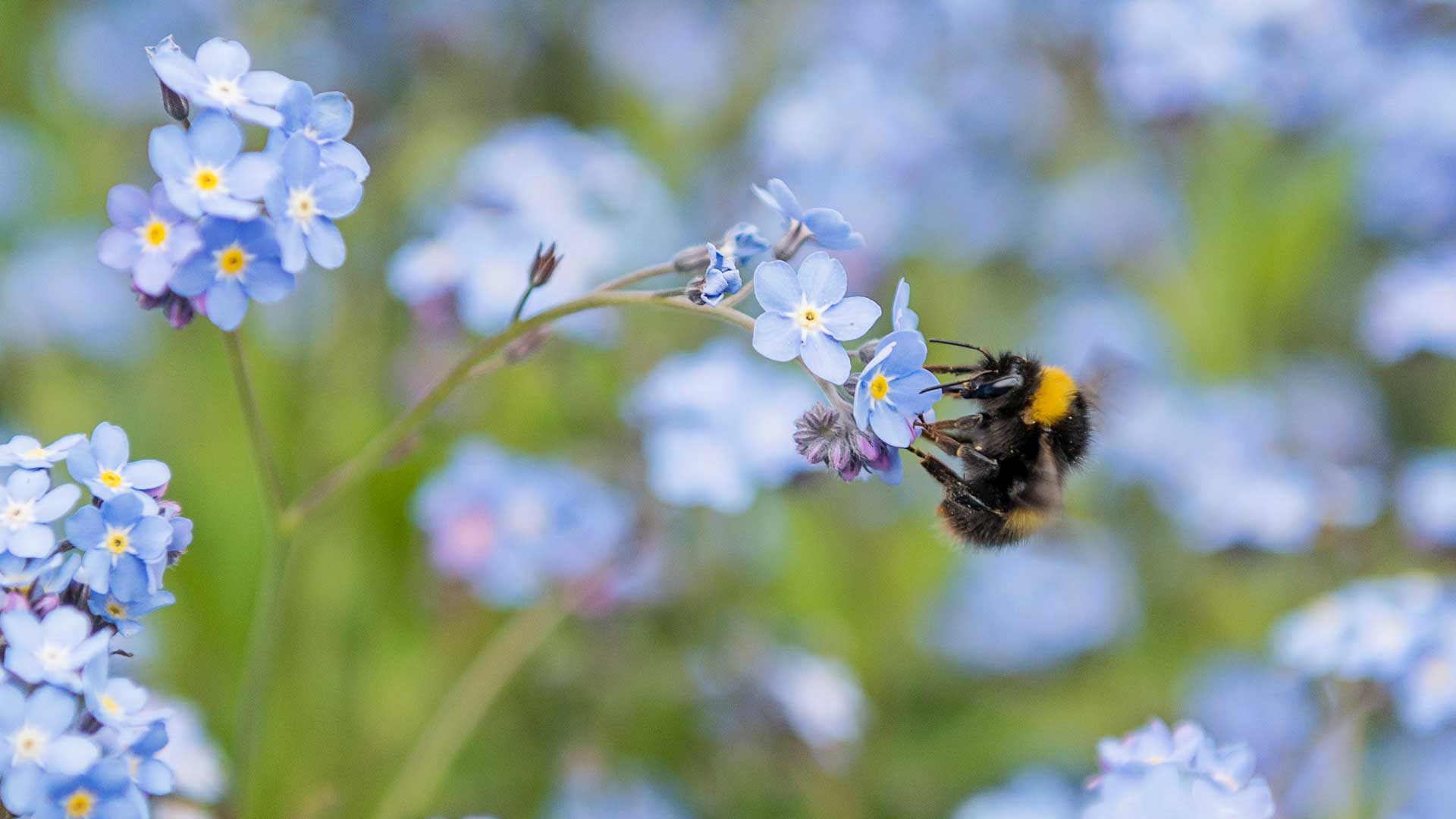
A beautiful option for a burst of blue
Forget-me-nots are a charming addition to a cottage garden. They're also good for pollinators, as Emily points out.
They have blue-grey petals and dazzling yellow centres which entice butterflies to land and sip on the nectar, she says. They flower early in the spring, making them a vital source of food for pollinators emerging from hibernation, she adds.
Forget-me-not seeds are available from Thompson & Morgan. They can be grown in either sunny or shady spots and will self-seed.
FAQs
What are the best shade plants for pollinators?
It's still possible to help local pollinators in a shady garden. As well as forget-me-nots, consider foxgloves with their impressive purple blooms, hostas, or aquilegia – a classic cottage garden plant.
What plants are good for moths?
Don't forget about moths, which are pollinators, too. Eric says, "By adding night-scented blooms to the flower beds, moths can tuck into a well-earned snack ahead of their nighttime adventures.
"Choose white or dull-coloured flowers to appeal best to them, with night-scented phlox, moonflowers and star jasmine being excellent choices.
"Not only do the moths feast on the flowers, but some plants will fill your garden with a fragrant aroma in the late afternoon sun," he adds.
Star jasmine also makes an effective privacy plant.
Looking for more ways to elevate your garden? Now could be a good time to consider an outdoor furniture update, so you can admire your new plants and their pollinating visitors in comfort and style.

The garden was always a big part of Holly's life growing up, as was the surrounding New Forest where she lived. Her appreciation for the great outdoors has only grown since then; she's been an allotment keeper, a professional gardener, and a botanical illustrator. Over three years ago, Holly started writing about plants and outdoor living full-time, first for Gardeningetc.com and now for popular lifestyle titles such as Homes & Gardens.
-
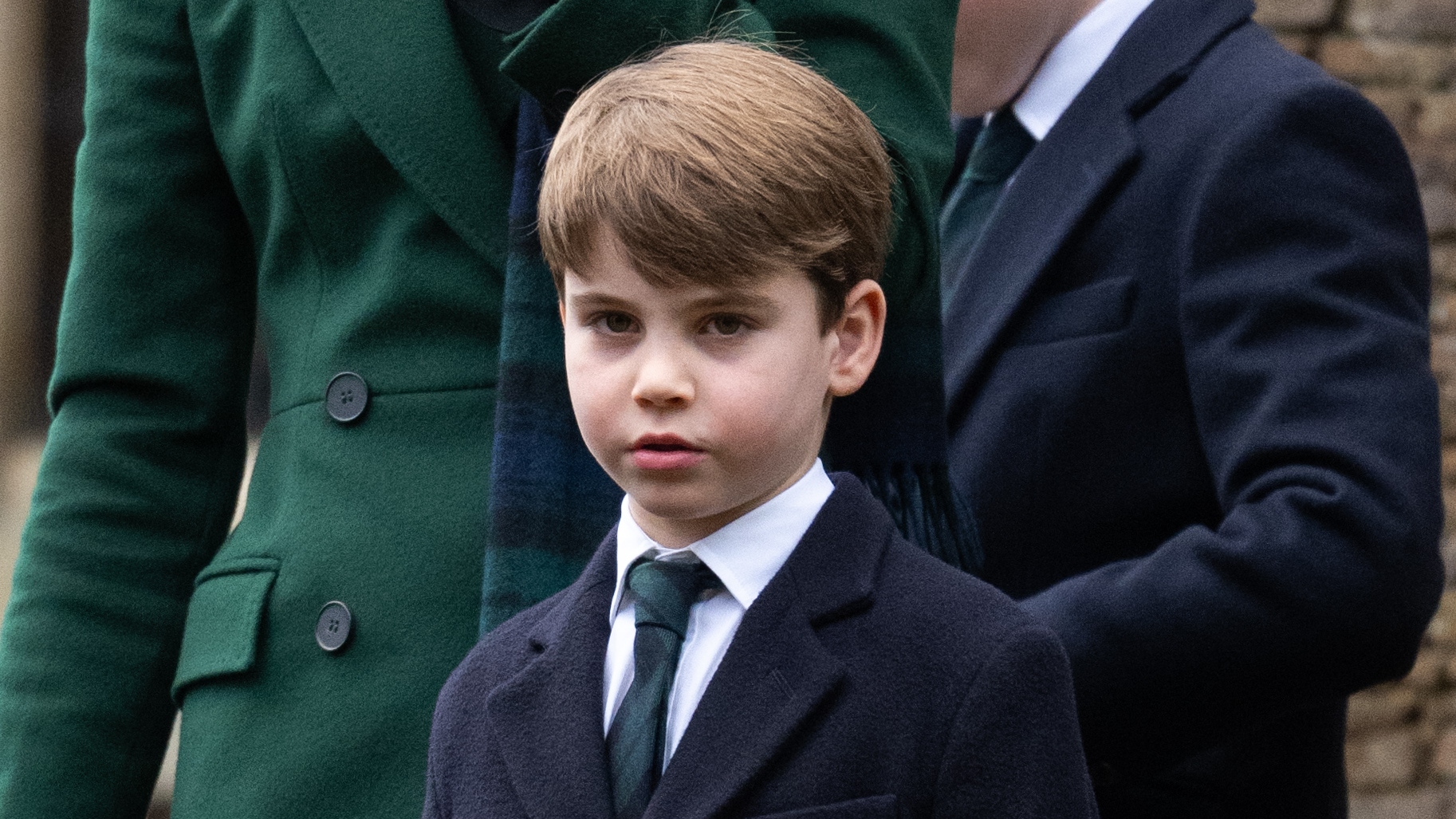 Prince Louis turns 7! Prince William and Kate release new picture that will have you saying exactly the same thing as us
Prince Louis turns 7! Prince William and Kate release new picture that will have you saying exactly the same thing as usThe wait is over as the Prince and Princess of Wales release Prince Louis’ adorable seventh birthday photo taken in Norfolk.
By Emma Shacklock
-
 Demi Moore best beauty looks from across the years
Demi Moore best beauty looks from across the yearsFrom sultry, smokey eyes to her enviable long black locks, we look back at the actor's enviable hair and makeup looks
By Lucy Abbersteen